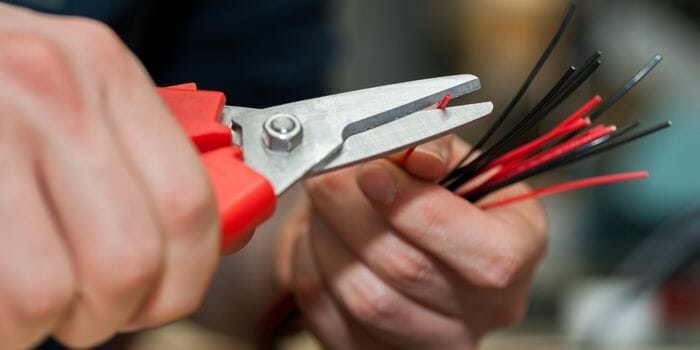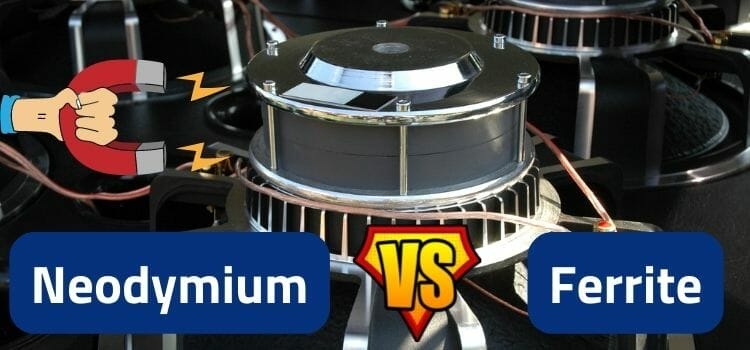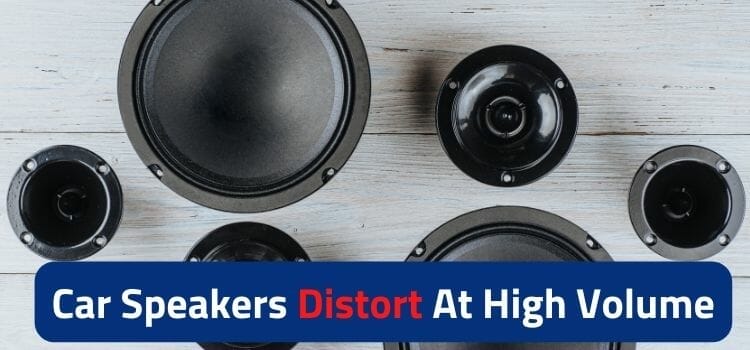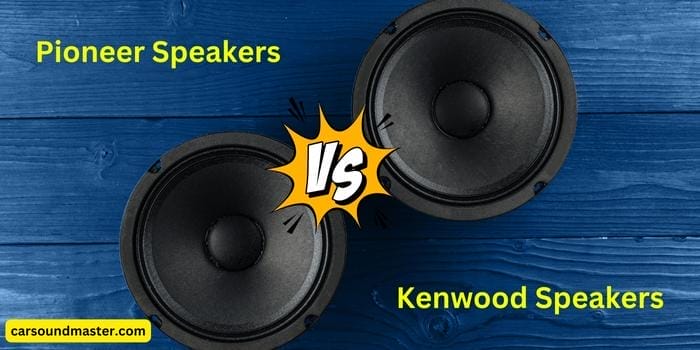4×6 Plate Speakers Vs Oval? A Complete Guide On Which One to Get
One of the widely accepted universal truths is that a round speaker always scores well on the SQ benchmark compared to an oval one which is good at SPL only.
It may sound confusing to you, but yes, a circular cone always has more impactful, definite, and high-fi sounds; an oval one just has higher intensities but not as such clarity or punchy bass.
So if that’s obviously the criteria, a 4×6 plate speaker would be the first-choice option for anyone who seeks quality and clarity in their music moments.
Otherwise, 4×6 ovals are what you should get if you just want high highs and low lows and don’t bother with things like sound coloration, etc.
Related Article: Premium 4-Inch Car Speakers with Good Bass [Tested]
4×6 Plate Speakers Vs Oval – Let’s Find Out
4×6 is one of the most common car speaker sizes and, perhaps, one of the top contenders to go into your dashboard or rear pillars most of the time.
Although not a top-of-the-line choice for use as front-stage/main speakers (given the vast array of options), 4×6 plates or ovals are best used as fillers usually to bridge the gaps from front or rear in the car’s soundstage.
A Bit About 4×6 Plate Speakers
Here is.
Why Choose 4×6 Plate Speakers Over 4×6 Ovals?
A circular woofer and a tweeter mounted side by side on a plate to simply stick onto your dash or pillars are what they call plate speakers. They are an excellent replacement for older oblong 4x6s or 5×7/6x8s.
Firstly, because they are much easier to fit in compact spaces and easier to install as well. Secondly, the sound produced by round speakers is always of higher quality than that of non-round (elliptical/oval) ones.
Thirdly, because 4×6 plate speakers are round, the majority of them are built inspired by component speakers. So you get options to customize your drivers’ placements as per your understanding and outlook of perfect sound imaging.
Superior Sound Quality with Clear and Impactful Notes
The reasons for better sound quality of 4×6 plate speakers are quite straightforward i.e. the symmetrical design of the speakers allows a fair and square dispersion of signals that ultimately translates into more synchronized sounds.
With round cones, the body also has an even all-round control over the conus’ sheath which means no unusual distortions in the cone shape during the high-kick frequencies.
In addition to this, round woofers are also not laden with cone-mounted tweeters which means no frequency conflicts, and eventually more accurate music.
Less Loud and Less Bass-heavy
However, because the woofer cone of a 4×6 plate speaker is smaller than its oval counterpart, you may end up feeling relatively lesser intensity and bass.
4×6 Oval Car Speakers
About Oval.
They are Built to Sound Loud – But with Poor Quality
Oval speakers would more often come as stock standards in older (say, 20th century) vehicles to make good use of less space (in parcel shelves) courtesy of their Vocaloid shapes.
The luxury with oval speakers is that you get a maximum surface area at the cone that allows for more air to move and eventually produce louder and more bass-heavy sounds.
But the sound quality of an oval speaker never gets as good as that of the rounds due to their asymmetrical shapes and no even grip of the body over the cone. The same goes for 4×6 plate speakers’ vs ovals’ sound quality as well. It may be loud but shaky and unclear at the same time.
Full-range Oval Speakers Are Failures
Coaxial ovals make things even worse due to their solo-unit builds. There is more interference and cancel-out phenomena between the frequencies which ultimately means more coloration and impurities esp. at higher volumes.
Oval Speakers Work Best in Proper Enclosing
For oval speakers to show up with their peak performance, they need to be kept in relatively bigger enclosures. Their bigger cones move more air molecules than the round 4x6s so they need a relatively large enclosure to peak at throwing the lows – what we call bass
Loud and Bass-heavy Sounds
Nevertheless, you can expect an oval 4×6 speaker to throw a tad bit deeper bass than a 4×6 plate speaker. But again, 4×6 speakers are not as good to be used as main speakers. You should only expect them to be the second fiddles working to fill the gaps (if any) in your car cabin’s soundstage.
Oval 4x6s May Be Cheaper and Easier to Install
Because you don’t as often get the luxury of component designs with oval speakers, they fill that gap with their lower price tags. That said, compared to the round 4×6 plates, oval speakers are also easier to set up.
Contrary to a bit complicated wiring of plate speakers (due to separate drivers), oval speakers simply need one straightforward connection from the stereo or amp to get up and running.
Wrapping Up
The 4-into-6-inch speaker size is one fairly popular choice, especially among people with smaller family cars and dinky budgets.
Although they don’t drive much exclusiveness as far as serious audiophiles are concerned, 4×6 speakers have enough in them for people who don’t as much bother with the minutiae of notes, frequencies, and octaves.
These speakers are good to get if you go with their round/plate version and custom-mount the tweeters (or maybe the bass driver as well) as second-fiddle adjuncts to your car’s other big speakers.
But if you plan to keep them as your vehicle’s main speakers, the 4×6 speakers require an additional subwoofer to better optimize your music moments by perfectly peaking the overall audible notes.
However, because these speakers are mostly preferred in dashboards or on rear pillars, their placement (and enclosing) may still put some blemishes on their bass performance.
To end the “4×6 plate speakers vs oval” debate, I have a business-end suggestion for you regarding their installation i.e. the stocks of these sizes usually have closed-fit grills over them, so when doing the overhaul, redo the measurements and, if required, remove the grills to let the replacements sit perfectly in place.







